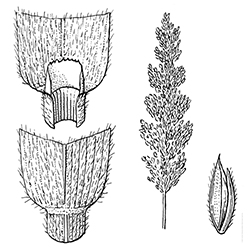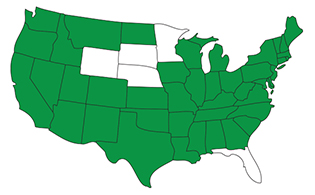

Velvetgrass
Holcus lanatus
Velvetgrass is a perennial grass that is often considered to be lawn weed—especially in lawns with poor drainage. This grass-like weed is also referred to as Velvet-grass, Velvet Grass, Common Velvet Grass or by its scientific name, Holcus lanatus.
Identify

Bunch

Membranous

Rolled
Velvetgrass can be identified as a velvety perennial grass—or grassy weed—that is grayish-green in color. Its ligule is medium to tall, jagged at the top and hairy on the back. Its collar is continuous, hairy and narrow. Velvetgrass also features compressed sheaths that are densely hairy with pink nerves. Its pointed blades are flat, soft and hairy. Velvetgrass forms bunch-like patches that enlarge rapidly by aggressive tillering. Reproduction is by seeds.
Life Cycle
Whether as planted grass or as lawn weeds, Velvetgrass prefers moist to wet soils and can often be found growing in lawns, drainage ditches and other disturbed areas. Velvetgrass thrives throughout much of North America. These perennial grasses can germinate and spread from seeds, but they also produce a root structure (tubers, bulbs or corms) that can birth new weeds from your lawn's surface (using stolons) or from underground (using rhizomes). Perennial grassy weeds live two or more years and have a deeper root structure that can give rise to new weeds—even if you no longer see the weeds in your lawn.

Control
Velvetgrass is a difficult grassy weed to control when strictly relying on cultural methods such as hand-pulling lawn weeds and proper watering and mowing routines—especially in lawns with poor drainage. For effective weed removal, professionally selected and applied weed control treatments are your best bet for eradication.







